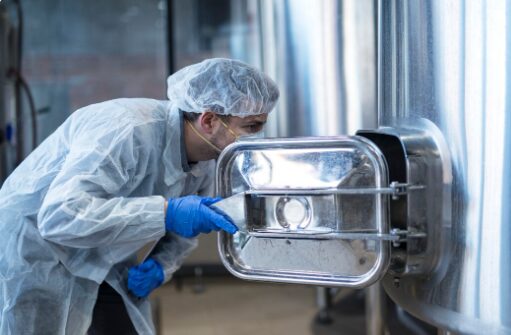From Aerospace to Food Processing: Who’s Using Stainless Steel Forging

Stainless steel forging shapes the backbone of manufacturing. Today, multiple industries depend on stainless steel forging to create components that must withstand extreme conditions while maintaining precision and reliability. From the engine bay of your car to the operating room of a hospital, forged stainless steel parts quietly perform critical functions that keep our world running smoothly.
What Makes Stainless Steel Forging Special
Before examining specific industries, it’s worth understanding why forging matters. Unlike casting or machining, forging compresses and shapes metal under extreme pressure. This process creates a grain structure that flows around the part’s contours, resulting in superior strength and fatigue resistance.
Stainless steel brings corrosion resistance to the table. When you combine stainless steel’s inherent properties with the mechanical advantages of forging, you get components that can handle harsh environments while maintaining structural integrity for decades.
Aerospace Industry: Where Failure Isn’t an Option
The aerospace sector demands perfection from every component. Aircraft engines operate in environments that would destroy lesser materials within minutes. Temperatures fluctuate from subzero at altitude to over 1,000 degrees Fahrenheit in the combustion chamber. Pressures shift dramatically, and vibrations never stop.
Stainless steel forging creates turbine blades that spin at 10,000 RPM while maintaining precise tolerances. These blades must resist creep deformation at high temperatures while handling the stress of rapid acceleration and deceleration. Forged stainless steel compressor components channel air through engines with the precision required for optimal fuel efficiency.
Landing gear components represent another critical application. The landing gear on a commercial aircraft must support weights exceeding 500,000 pounds during landing, often in crosswinds and challenging weather conditions. Forged stainless steel struts, brackets, and actuators provide the strength needed to handle these loads repeatedly without failure.
Space applications push material requirements even further. Rocket components must function in the vacuum of space while withstanding launch stresses and temperature extremes. Forged stainless steel valve bodies, pressure vessel components, and structural elements help spacecraft reach orbit and beyond.
Automotive Industry: Built to Last
Every new vehicle contains dozens of forged stainless steel components. Engine valves represent perhaps the most demanding application. These components open and close thousands of times per minute in an environment filled with combustion gases, extreme temperatures, and corrosive byproducts.
Forged stainless steel valves resist warping under thermal stress while maintaining the precise sealing surfaces needed for proper compression. The forging process creates a grain structure that flows around the valve’s critical stress points, preventing the crack initiation that leads to catastrophic failure.
Exhaust systems showcase another vital application. Catalytic converter housings must contain chemical reactions at temperatures exceeding 1,200 degrees Fahrenheit while resisting corrosion from acidic exhaust gases. Forged stainless steel components provide the durability needed to meet emission standards throughout a vehicle’s lifespan.
Suspension components increasingly use forged stainless steel for their strength-to-weight ratio. Control arms, steering knuckles, and shock absorber components benefit from forging’s ability to create complex shapes while maintaining the material properties needed for safety-critical applications.
The shift toward electric vehicles has created new demands for forged stainless steel components. Battery cooling systems require corrosion-resistant parts that can handle thermal cycling and chemical exposure. Forged stainless steel fittings, housings, and heat exchangers help manage the thermal challenges of high-capacity battery systems.
Medical Industry: Precision Meets Biocompatibility
Healthcare applications demand materials that won’t harm the human body while performing flawlessly in challenging environments. Surgical instruments must maintain sharp edges through repeated sterilization cycles while resisting corrosion from body fluids and cleaning chemicals.
Forged stainless steel creates surgical tools with superior edge retention and corrosion resistance. The forging process eliminates the porosity that can harbor bacteria, making these instruments safer for patient use. Orthopedic implants benefit from forging’s ability to create complex shapes with the strength needed to support body weight and movement.
Dental applications require materials that can withstand the oral environment’s combination of mechanical stress, temperature changes, and chemical exposure. Forged stainless steel brackets, bands, and springs provide the consistent force needed for orthodontic treatment while resisting staining and corrosion.
Medical device housings protect sensitive electronics while maintaining biocompatibility. Forged stainless steel enclosures for pacemakers, insulin pumps, and other implantable devices provide the strength needed to protect internal components while meeting strict regulatory requirements for human use.
Food Processing: Where Hygiene Meets Durability
Food processing equipment operates in environments that combine mechanical stress, temperature extremes, and aggressive cleaning chemicals. Equipment must meet strict sanitary standards while handling the physical demands of continuous operation.
Forged stainless steel pump components handle everything from dairy products to acidic fruit juices without contaminating the product or degrading over time. The smooth surface finish achievable through forging eliminates crevices where bacteria might hide, making equipment easier to clean and sanitize.
Mixing and blending equipment relies on forged stainless steel components that can handle high torque loads while maintaining food safety standards. Agitator shafts, impellers, and housing components must resist wear while avoiding any material transfer that could contaminate food products.
Valve bodies and fittings in food processing systems require materials that won’t react with food products or cleaning chemicals. Forged stainless steel provides the corrosion resistance needed for dairy processing, beverage production, and other applications where product purity is essential.
High-pressure applications like pasteurization systems demand components that can handle extreme pressures while maintaining food safety standards. Forged stainless steel vessel components provide the strength needed for these applications while meeting FDA requirements for food contact surfaces.
Energy Sector: Power Under Pressure
Power generation creates some of the most demanding environments for materials. Steam turbines in power plants operate at temperatures and pressures that would destroy most materials within hours. Forged stainless steel turbine components provide the strength and corrosion resistance needed for reliable power generation.
Nuclear applications require materials that can withstand radiation while maintaining structural integrity. Forged stainless steel reactor components, piping systems, and safety equipment help ensure nuclear power plants operate safely and reliably for decades.
Oil and gas applications expose equipment to corrosive chemicals, extreme pressures, and temperature fluctuations. Forged stainless steel wellhead components, valve bodies, and pipeline fittings provide the durability needed for safe hydrocarbon extraction and processing.
Renewable energy systems increasingly rely on forged stainless steel components. Wind turbine gearboxes contain forged components that must handle variable loads and weather exposure for twenty years or more. Solar panel mounting systems use forged stainless steel hardware that won’t degrade under constant sun exposure.
The Future of Stainless Steel Forging
Manufacturing technology continues advancing, creating new possibilities for forged stainless steel components. Precision forging techniques allow manufacturers to create parts with tighter tolerances, reducing machining requirements and improving cost effectiveness.
New stainless steel alloys designed specifically for forging applications offer improved properties for specialized uses. These materials help manufacturers create components that perform better while reducing weight and cost.
Environmental considerations drive innovation in both forging processes and stainless steel recycling. Forging techniques reduce waste while creating stronger, more durable components that last longer in service.
Conclusion
Stainless steel forging supports industries that define present day life. From the car in your driveway to the hospital where you receive care, forged stainless steel components provide the strength, corrosion resistance, and reliability that keep our world functioning.
The combination of stainless steel’s inherent properties with forging’s mechanical advantages creates materials that can handle whatever challenges industries throw at them. As technology advances and new applications emerge, stainless steel forging will continue playing a vital role in manufacturing the components that power our future.

Source: From Aerospace to Food Processing: Who’s Using Stainless Steel Forging



